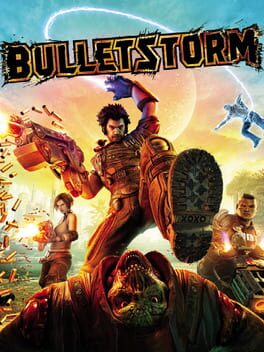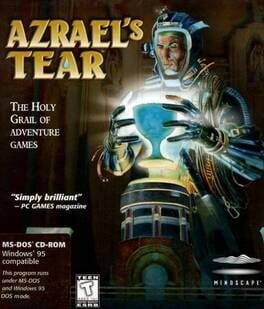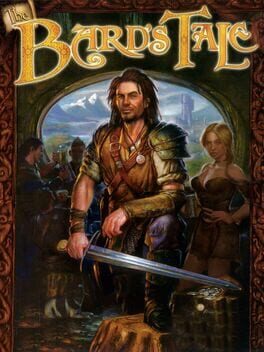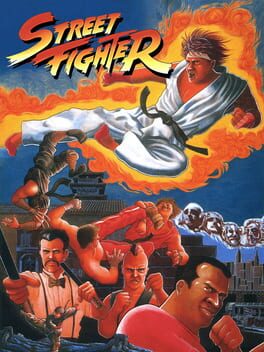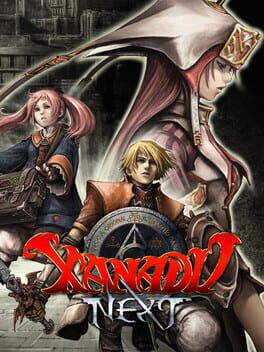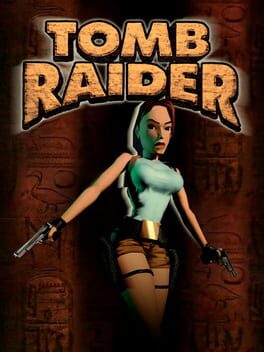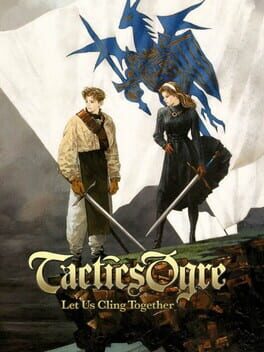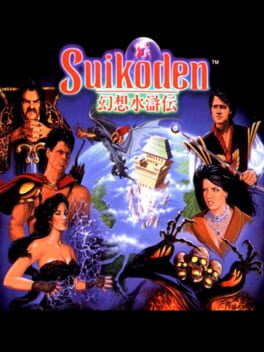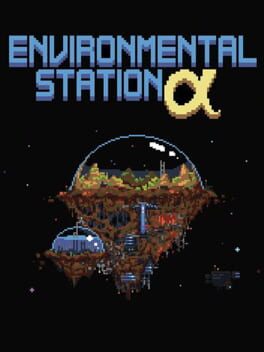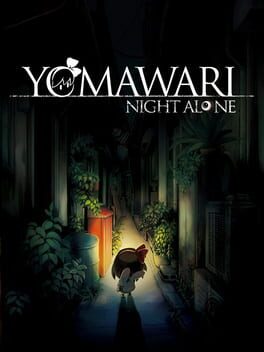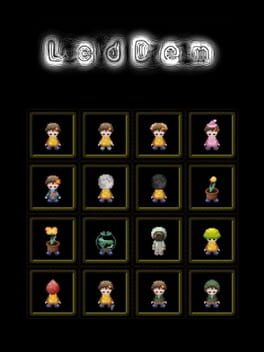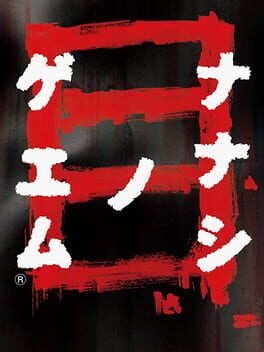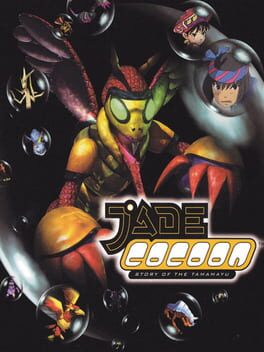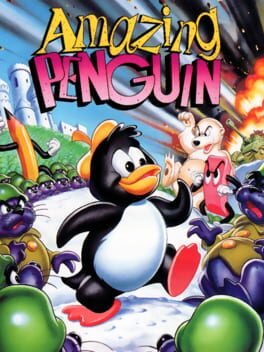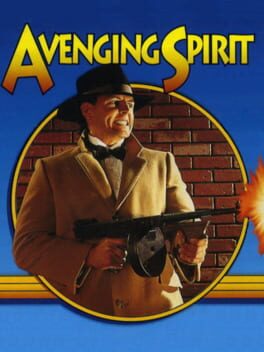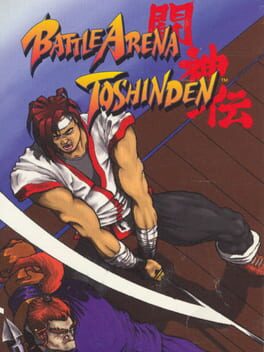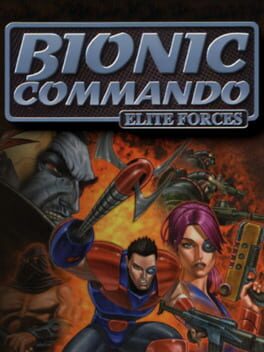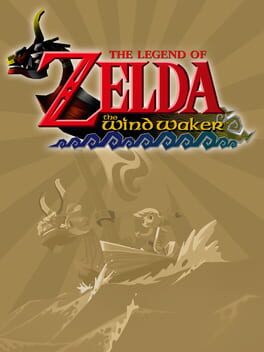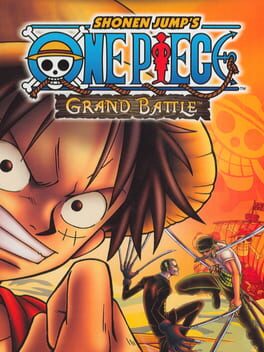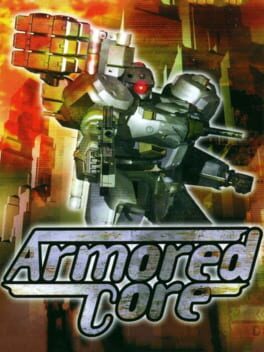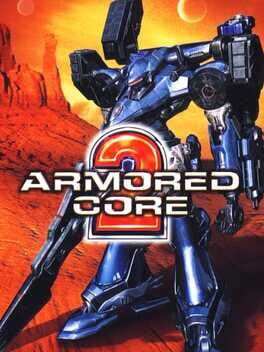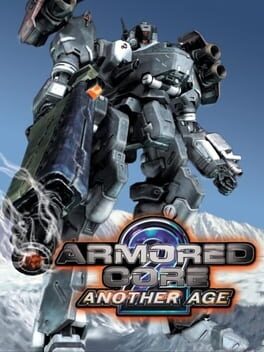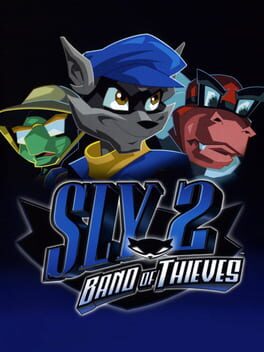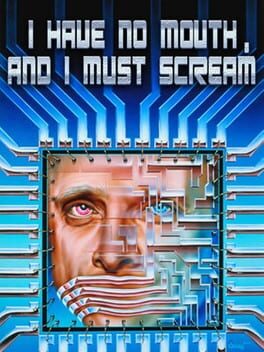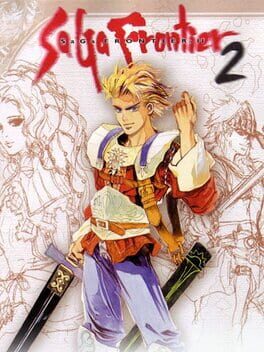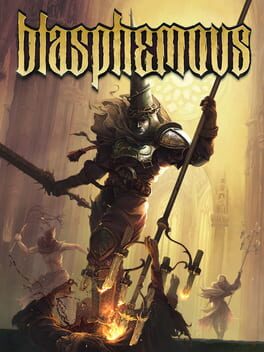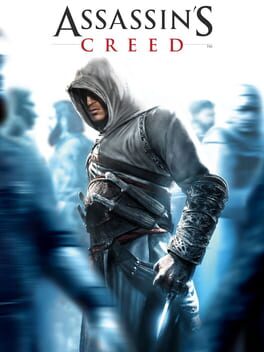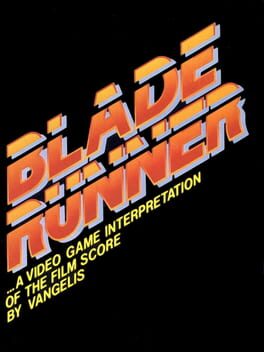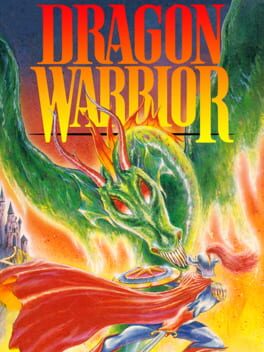GoatedQuest
BACKER
29 reviews liked by GoatedQuest
Bulletstorm
2011
I remember playing the demo for this game constantly back in the day. Trying to get a higher score per kill and trying to creatively dismember every freakzoid that ran past me. I thought the mechanics made the shooting so cool. I memorized the set pieces and where each weapon drop was. It felt the right amount of Arcade yet console.
So when I ran into this same space at the end of the game, everything became so familiar. All game I've kinda just played it as a shooter with the mechanics given to me, not really maximizing what I could do because well... I already maximized all my weapons and upgrades. But when I got to this part, It kinda felt like that ratatouille scene with the critic. I was having a blast trying to recreate that optimized run I did so many times, playing through the demo once more. It was second nature to me.
Second Nature is a good review of Bulletstorm. At first, the slow motion of the kick and leash feel weird, but very quickly they become second nature to your arsenal. Sliding, kicking, pulling, thumping; the core movement and non gunplay mechanics all bleed into one another that just feel good to use. They allow for positioning and forcing enemies to fear for you instead of hugging cover every 5 feet. It's all super addicting. Once again I found myself sitting on my porch, playing this on my Steam Deck damn near until completion.
The biggest surprise for me was the story. Funny enough, I just talked shit about Borderlands 2 like a month ago for the same caliber of writing, but for some reason it just feels....right here. General Sarrano is a supreme asshole. Every time he spoke, it made me mad I couldn't pull the trigger my damn self. For the chaos that occurs just off one shipwreck, you can understand why the tone is irreverent. Though the ending sequel teaser is kinda lame.
So when I ran into this same space at the end of the game, everything became so familiar. All game I've kinda just played it as a shooter with the mechanics given to me, not really maximizing what I could do because well... I already maximized all my weapons and upgrades. But when I got to this part, It kinda felt like that ratatouille scene with the critic. I was having a blast trying to recreate that optimized run I did so many times, playing through the demo once more. It was second nature to me.
Second Nature is a good review of Bulletstorm. At first, the slow motion of the kick and leash feel weird, but very quickly they become second nature to your arsenal. Sliding, kicking, pulling, thumping; the core movement and non gunplay mechanics all bleed into one another that just feel good to use. They allow for positioning and forcing enemies to fear for you instead of hugging cover every 5 feet. It's all super addicting. Once again I found myself sitting on my porch, playing this on my Steam Deck damn near until completion.
The biggest surprise for me was the story. Funny enough, I just talked shit about Borderlands 2 like a month ago for the same caliber of writing, but for some reason it just feels....right here. General Sarrano is a supreme asshole. Every time he spoke, it made me mad I couldn't pull the trigger my damn self. For the chaos that occurs just off one shipwreck, you can understand why the tone is irreverent. Though the ending sequel teaser is kinda lame.
Halfway through the year and now I'm finally doing the goals I had for 2024. Last year I binged a bunch of game series and the original idea was to binge the Arkham series once I started it....
That's not gonna happen, boss.
For context, I'm a Spidey-kid. I got into comics because of playing Ultimate Spider-man and reading the entire universe, even after its collapse and re-release. The power fantasy of swinging through the city and doing cool flips and shit is the appeal for me. I've never really been a Batman dude. I didn't like the Nolan movies like that, I didn't watch the dozens of cartoons, and even if I did play a DC game, I played everyone but Batman. I played as Robin instead of Batman in Rise of Sin Tzu.
Batman Arkham Asylum is the quintessential Batman game (until I play the next one). You feel as unstoppable as you look. Each combo feels like it hurts, as goons can't even sneak attack you without getting their leg snapped and head beat in. Even as they set up countermeasures just in case you arrive, you still effortlessly take them out one by one in the shadows of Arkham. Luckily, this doesn't overstay its welcome all too much, with the game adding brevity between encounters.
It's not metroidvanian in world design, but you do backtrack to different points with upgraded gadgets. More so, the world is set up with a Hub area that shifts you to designated levels for whatever villain needs apprehending at the time. Each one having their own video gamey ass way of defeating them. Their gimmicks are fun and unique enough to keep me going. Though, some like Scarecrow drag on a little too long for my liking.
The game is beautiful too, but a lot of the level design is blocked out from constantly using detective mode. Sometimes I'd forget to turn it off and do entire combat rooms with it on before realizing. Once I took a step back to admire the world, I did get to see the tiny details littered about that update after each level to show the destruction of Arkham. Same goes for Batman and his suit slowing getting more damaged as you progress the game.
The biggest surprise for me was Batman. For comparison, in a Spider-Man game, you are playing as Spider-Man (no shit), but in Arkham, I am not playing Batman. This sounds weird even as I type this, but let me elaborate. While for example in Spider-Man PS4, I can swing webs, use my spidey sense, and what not. If I get an upgrade, I just unlock it from a menu and now can magically double air jump glide boost or whatever. I have full control over Spider-Man and what he does and uses throughout the entire game. Whereas in Batman, there's a little more logic in place. For example, right before you fight Killer Croc there's a spot where Batman automatically sets an explosive charge on the floor, which I thought was weird. I sat there for a minute or 2 trying to detonate it and see what riddler trophy or if this was the right way to go. Only for at the end of the boss fight for this same trap to be used to defeat Killer Croc. I did not set this trap for him, Batman set this trap up.
There isn't a dumb biochemistry minigame to triangulate the fingerprint DNA analysis or whatever, Batman just does it. He calls in for supplies without me having to think about what the next gadget I need, He just does it, and I'm led there as the player to what Batman was thinking later on. It's very interesting.
I was spoiled on the ending through internet Top 10s and whatnot, so I knew the final boss going into it, and it makes sense if you pay attention to the story. It didn't ruin the experience or anything for me, it made the most logical sense for the finale of the game.
Overall, I dig it. I'm self imposing a rule on myself after the FEAR series to give these games some time to breathe before hopping into the next one, so I don't lambaste the next one. I know that Arkham City adds a whole city (no shit), and one of my biggest complaints was how stiff aerial movement and grappling felt, which will probably be improved greatly in the next title.
That's not gonna happen, boss.
For context, I'm a Spidey-kid. I got into comics because of playing Ultimate Spider-man and reading the entire universe, even after its collapse and re-release. The power fantasy of swinging through the city and doing cool flips and shit is the appeal for me. I've never really been a Batman dude. I didn't like the Nolan movies like that, I didn't watch the dozens of cartoons, and even if I did play a DC game, I played everyone but Batman. I played as Robin instead of Batman in Rise of Sin Tzu.
Batman Arkham Asylum is the quintessential Batman game (until I play the next one). You feel as unstoppable as you look. Each combo feels like it hurts, as goons can't even sneak attack you without getting their leg snapped and head beat in. Even as they set up countermeasures just in case you arrive, you still effortlessly take them out one by one in the shadows of Arkham. Luckily, this doesn't overstay its welcome all too much, with the game adding brevity between encounters.
It's not metroidvanian in world design, but you do backtrack to different points with upgraded gadgets. More so, the world is set up with a Hub area that shifts you to designated levels for whatever villain needs apprehending at the time. Each one having their own video gamey ass way of defeating them. Their gimmicks are fun and unique enough to keep me going. Though, some like Scarecrow drag on a little too long for my liking.
The game is beautiful too, but a lot of the level design is blocked out from constantly using detective mode. Sometimes I'd forget to turn it off and do entire combat rooms with it on before realizing. Once I took a step back to admire the world, I did get to see the tiny details littered about that update after each level to show the destruction of Arkham. Same goes for Batman and his suit slowing getting more damaged as you progress the game.
The biggest surprise for me was Batman. For comparison, in a Spider-Man game, you are playing as Spider-Man (no shit), but in Arkham, I am not playing Batman. This sounds weird even as I type this, but let me elaborate. While for example in Spider-Man PS4, I can swing webs, use my spidey sense, and what not. If I get an upgrade, I just unlock it from a menu and now can magically double air jump glide boost or whatever. I have full control over Spider-Man and what he does and uses throughout the entire game. Whereas in Batman, there's a little more logic in place. For example, right before you fight Killer Croc there's a spot where Batman automatically sets an explosive charge on the floor, which I thought was weird. I sat there for a minute or 2 trying to detonate it and see what riddler trophy or if this was the right way to go. Only for at the end of the boss fight for this same trap to be used to defeat Killer Croc. I did not set this trap for him, Batman set this trap up.
There isn't a dumb biochemistry minigame to triangulate the fingerprint DNA analysis or whatever, Batman just does it. He calls in for supplies without me having to think about what the next gadget I need, He just does it, and I'm led there as the player to what Batman was thinking later on. It's very interesting.
I was spoiled on the ending through internet Top 10s and whatnot, so I knew the final boss going into it, and it makes sense if you pay attention to the story. It didn't ruin the experience or anything for me, it made the most logical sense for the finale of the game.
Overall, I dig it. I'm self imposing a rule on myself after the FEAR series to give these games some time to breathe before hopping into the next one, so I don't lambaste the next one. I know that Arkham City adds a whole city (no shit), and one of my biggest complaints was how stiff aerial movement and grappling felt, which will probably be improved greatly in the next title.
Azrael's Tear
1996
Alien Soldier
1995
Imagine you've mastered Shattered Soldier (or some equivalent) and you can now 1cc it regularly. Confident, you decide to show it off at some kind of event-- but upon beginning, your dexterity is seriously f u n k y and anxious confusion starts to gnaw away, followed by embarrassment.
Then you wake up.
Initially learning Alien Soldier was like running in a dream for me. Although I managed to complete it, the skill ceiling still looks awfully high.. and I love that.
Using Mischief Makers as a personal, relative example-- I've been playing that game for like 25 years (on and off). It's an exciting prospect to imagine that I could keep getting something out of Alien Soldier for decades to come. This one feels like a forever game for me. It might be my favorite aesthetic on the Mega Drive.
Then you wake up.
Initially learning Alien Soldier was like running in a dream for me. Although I managed to complete it, the skill ceiling still looks awfully high.. and I love that.
Using Mischief Makers as a personal, relative example-- I've been playing that game for like 25 years (on and off). It's an exciting prospect to imagine that I could keep getting something out of Alien Soldier for decades to come. This one feels like a forever game for me. It might be my favorite aesthetic on the Mega Drive.
The Bard's Tale
2004
In 1996, I was six years old and lived in Florida. Wario Land had been released two years prior-- though I loved Super Mario Land 2 and replayed it regularly on my og/fat Game Boy.. I had no idea this game existed. On a particular weekend, I stayed over at my great grandmother's apartment.
I played MANY games in front of them while they sat in a rocking chair. She always encouraged me and my interest in games. Her favorite thing was seeing Crash Bandicoot die in a myriad of ways-- took pure pleasure in it. A very kind and cool person.
My family has always been deeply religious, unfortunately it came with a severe demonizing of secular media. This was bad for me, to say the least. Despite this, my great grandma would do things like rent Splatterhouse 2 for me. We even had lookout schemes where I would quickly switch to a "friendly" game when she saw another family member arrive to pick me up, or etc.
On this aforementioned weekend in 1996, my great grandmother took me to a Sunday service at a very old-fashioned, musty, southern baptist church. She handed me 5$ and instructed me to tithe it when the donation plate was passed around. I did. After the service, she told me "I'm very proud of you"-- and then took me to Toys "R" Us to pick out a NEW game that I could OWN (rare for me). She was the one that pointed out Wario Land. I vividly remember falling in love with the color scheming on the front cover. I was blown away with this game.
The moral of the story is that money is my god now, and I am now a slime ball rat fuck.
Just kidding. Everything that Wario in is so good. They are often a beautiful design and mechanical antithesis to Nintendo games. I loved my Great Grandmother very much, she never judged me or the things that I liked superficially. Unfortunately I do not still have that copy of Wario Land: Super Mario Land 3.. but her funeral service pamphlet has made its way into various video game collage designs that I've made for my creative outlets (bands, social media design, youtube, etc). Wario rules. Love you, Nanny.
https://imgur.com/UEz3Jbh
I played MANY games in front of them while they sat in a rocking chair. She always encouraged me and my interest in games. Her favorite thing was seeing Crash Bandicoot die in a myriad of ways-- took pure pleasure in it. A very kind and cool person.
My family has always been deeply religious, unfortunately it came with a severe demonizing of secular media. This was bad for me, to say the least. Despite this, my great grandma would do things like rent Splatterhouse 2 for me. We even had lookout schemes where I would quickly switch to a "friendly" game when she saw another family member arrive to pick me up, or etc.
On this aforementioned weekend in 1996, my great grandmother took me to a Sunday service at a very old-fashioned, musty, southern baptist church. She handed me 5$ and instructed me to tithe it when the donation plate was passed around. I did. After the service, she told me "I'm very proud of you"-- and then took me to Toys "R" Us to pick out a NEW game that I could OWN (rare for me). She was the one that pointed out Wario Land. I vividly remember falling in love with the color scheming on the front cover. I was blown away with this game.
The moral of the story is that money is my god now, and I am now a slime ball rat fuck.
Just kidding. Everything that Wario in is so good. They are often a beautiful design and mechanical antithesis to Nintendo games. I loved my Great Grandmother very much, she never judged me or the things that I liked superficially. Unfortunately I do not still have that copy of Wario Land: Super Mario Land 3.. but her funeral service pamphlet has made its way into various video game collage designs that I've made for my creative outlets (bands, social media design, youtube, etc). Wario rules. Love you, Nanny.
https://imgur.com/UEz3Jbh
Street Fighter
1987
What do you mean Street Fighter 1 is bad?
The original Street Fighter is an infamously terrible game. There’s only one character to play, the controls are awful, and no one has ever done a special move in it on purpose. These are the things I’ve heard about the game for as long as I can remember, but as the existence of this piece might suggest, I think there’s actually more to the story. Street Fighter 1 is not only a good deal better as a game than its abysmal reputation suggests, it also serves as an intriguing and inspiring entry in the career of its creator that deserves more than we give it.
In Street Fighter 1, you maneuver on a 2D plane and try to land hits on your opponent by selecting from an arsenal of six normal attacks and three special moves (the same fireball, uppercut, and hurricane kick that fighting game players know today). You can jump to change your position or angle of attack and put pressure on a guard that can be either high or low. You can walk forward and backward and threaten space with your normals, control the screen with fireballs and dragon punches… it's a fighting game! There may not be any throws or combos or okizeme, and what is there may only half-work in the first place, but the blurry image of 2D fighting fundamentals is absolutely here on display, in a way that makes it easy to see how games just a few years later would pick up that torch and run with it. It may pale in comparison to its sequel, but it’s hardly the clueless jumble that many people make it out to be. It’s easy to see the future just by playing it.
Of particular note to me is the way special moves work. Just about every single conversation about Street Fighter 1 features the derogatory claim that special moves are more or less impossible to execute in the game. This is actually not true at all! Anyone can pull off specials in SF1, they just need to know the trick. See, possibly as a result of the game’s conversion from its original (awful) pneumatic punching pad controls to a more standard (but still innovative) six pushbutton layout, special moves in SF1 are executed not when the player presses a button down, but when they release a button.
STREET FIGHTER 1 HAS NEGATIVE EDGE, WHY DID NOBODY EVER TELL ME THIS.
When you use button releases for your special move inputs rather than button presses, throwing fireballs is about as easy as in any other game. What fascinates me about this is that these moves require you to know the specific trick to them. Fighting game players today sometimes feel nostalgic for the arcade era, an age where information traveled slowly via smaller-scope, person-to-person conversation within a community, rather than the current online environment where games are immediately picked apart and put back together in a global whirlwind, and knowledge circulates so quickly on social media that the “save that for nationals” mindset simply has no reason to exist anymore. Yet here we are in 2024, and an old game that sits at the very cornerstone of the whole genre has hidden technical knowledge that the vast majority of people don’t know about. Here is a game where to learn its secrets you still have to be told them by someone in the know. How cool is that? I only learned this quirk of the special moves from a random forum post from like fifteen years ago, and from all the conversations I’ve seen about the game most people don’t know about it either! I think that mystical, mysterious quality is something rare and special nowadays, and SF1 has it.
Outside of its merits as a fighting game (which I admit are pretty slim, I wouldn’t want to play it competitively), Street Fighter 1 inspires me because I can feel the hand of its creators in the game, especially that of its director Takashi Nishiyama.
SF1 feels to me like a key touchstone in a creative project Nishiyama was embarking on for much of his career. In 1984, three years before SF1’s release, he designed Kung-Fu Master, a game frequently credited with birthing the beat ‘em up genre. In Kung-Fu Master, the player moves across the screen, beating back enemies with a punch button and a kick button that they can also use while jumping or crouching for aerial or low attacks. At the end of the first stage, an enemy martial artist stands in the player’s way, and to defeat them the player has to reactively block the enemy’s attacks either high or low while sneaking in their own strikes, or else briefly back up out of the enemy’s range and then take advantage of their whiffs. It may be primitive looking, but years before even SF1 you can easily find in Nishiyama’s games the embryonic form of what would become classic fighting game combat.
Several years later Nishiyama would also design Avengers, a top-down beat ‘em up where players took the role of a fighter with punch attacks, kick attacks, and even a special whirling roundhouse move that, to me at least, immediately calls to mind a Street Fighter tatsu. It has the mark of an artist circling around an idea in their work. When I play games like these it feels to me that their creator was striving towards something, taking multiple stabs at an idea they found exciting.
Despite saying in his rare interview appearances that he only ever designed for the mass market and didn’t make games to cater to his own personal taste, at the time of Street Fighter’s development Nishiyama was an active student of martial arts, and in another interview he speaks with excitement about the various fighting styles he wanted to have represented in Street Fighter, noting that seeing those mismatched styles square off against each other would be a key appeal. He designed other games that don’t resemble Street Fighter at all of course, scrolling shooter games and the endless runner genre ancestor Moon Patrol. But here is a designer who kept coming back to these 2D combat games, always adding in little complications like separate punch and kick buttons and varied block-heights, because they made the games more fun to play, but maybe also because there was something about those complications that he needed to explore.
We give a lot of credit to many artists, our assorted Lynches and Kojimas and Miyazakis and others, for navigating a path through their own creative fixations across the breadth of their work. I can’t claim to know anything about the mind of Takashi Nishiyama, but in his games I feel that creative fixation. Fighting games are very important to me, and I truly think a game like the original Street Fighter deserves to be seen positively in the context of its creators’ work. After SF1, Nishiyama would leave Capcom to head his own division at SNK, and soon after he would direct Fatal Fury, a more sophisticated take on fighting games that he has likened to his own Street Fighter II. Together with the team he brought with him from Capcom, including his frequent collaborator Hiroshi Matsumoto (who is essential to the history of the genre in his own right, having the planner credit on Street Fighter 1 and numerous executive producer credits on later fighters), Nishiyama would be at the forefront of SNK’s development teams, leading the company to become the pillar of the fighting game genre we know them as today. He later founded Dimps, the studio that developed Street Fighter IV. The guy just couldn’t stay away from good old punching and kicking games.
It heartens me as a player, designer, and lover of videogames that it's possible to play these games and feel something so human in them, to see an artist toying with an idea, teasing out its essence and refining their craft. Street Fighter 1 feels like an important piece of that to me. It may not be a great fighting game, but it was part of something special, and to me that’s worth celebrating.
The original Street Fighter is an infamously terrible game. There’s only one character to play, the controls are awful, and no one has ever done a special move in it on purpose. These are the things I’ve heard about the game for as long as I can remember, but as the existence of this piece might suggest, I think there’s actually more to the story. Street Fighter 1 is not only a good deal better as a game than its abysmal reputation suggests, it also serves as an intriguing and inspiring entry in the career of its creator that deserves more than we give it.
In Street Fighter 1, you maneuver on a 2D plane and try to land hits on your opponent by selecting from an arsenal of six normal attacks and three special moves (the same fireball, uppercut, and hurricane kick that fighting game players know today). You can jump to change your position or angle of attack and put pressure on a guard that can be either high or low. You can walk forward and backward and threaten space with your normals, control the screen with fireballs and dragon punches… it's a fighting game! There may not be any throws or combos or okizeme, and what is there may only half-work in the first place, but the blurry image of 2D fighting fundamentals is absolutely here on display, in a way that makes it easy to see how games just a few years later would pick up that torch and run with it. It may pale in comparison to its sequel, but it’s hardly the clueless jumble that many people make it out to be. It’s easy to see the future just by playing it.
Of particular note to me is the way special moves work. Just about every single conversation about Street Fighter 1 features the derogatory claim that special moves are more or less impossible to execute in the game. This is actually not true at all! Anyone can pull off specials in SF1, they just need to know the trick. See, possibly as a result of the game’s conversion from its original (awful) pneumatic punching pad controls to a more standard (but still innovative) six pushbutton layout, special moves in SF1 are executed not when the player presses a button down, but when they release a button.
STREET FIGHTER 1 HAS NEGATIVE EDGE, WHY DID NOBODY EVER TELL ME THIS.
When you use button releases for your special move inputs rather than button presses, throwing fireballs is about as easy as in any other game. What fascinates me about this is that these moves require you to know the specific trick to them. Fighting game players today sometimes feel nostalgic for the arcade era, an age where information traveled slowly via smaller-scope, person-to-person conversation within a community, rather than the current online environment where games are immediately picked apart and put back together in a global whirlwind, and knowledge circulates so quickly on social media that the “save that for nationals” mindset simply has no reason to exist anymore. Yet here we are in 2024, and an old game that sits at the very cornerstone of the whole genre has hidden technical knowledge that the vast majority of people don’t know about. Here is a game where to learn its secrets you still have to be told them by someone in the know. How cool is that? I only learned this quirk of the special moves from a random forum post from like fifteen years ago, and from all the conversations I’ve seen about the game most people don’t know about it either! I think that mystical, mysterious quality is something rare and special nowadays, and SF1 has it.
Outside of its merits as a fighting game (which I admit are pretty slim, I wouldn’t want to play it competitively), Street Fighter 1 inspires me because I can feel the hand of its creators in the game, especially that of its director Takashi Nishiyama.
SF1 feels to me like a key touchstone in a creative project Nishiyama was embarking on for much of his career. In 1984, three years before SF1’s release, he designed Kung-Fu Master, a game frequently credited with birthing the beat ‘em up genre. In Kung-Fu Master, the player moves across the screen, beating back enemies with a punch button and a kick button that they can also use while jumping or crouching for aerial or low attacks. At the end of the first stage, an enemy martial artist stands in the player’s way, and to defeat them the player has to reactively block the enemy’s attacks either high or low while sneaking in their own strikes, or else briefly back up out of the enemy’s range and then take advantage of their whiffs. It may be primitive looking, but years before even SF1 you can easily find in Nishiyama’s games the embryonic form of what would become classic fighting game combat.
Several years later Nishiyama would also design Avengers, a top-down beat ‘em up where players took the role of a fighter with punch attacks, kick attacks, and even a special whirling roundhouse move that, to me at least, immediately calls to mind a Street Fighter tatsu. It has the mark of an artist circling around an idea in their work. When I play games like these it feels to me that their creator was striving towards something, taking multiple stabs at an idea they found exciting.
Despite saying in his rare interview appearances that he only ever designed for the mass market and didn’t make games to cater to his own personal taste, at the time of Street Fighter’s development Nishiyama was an active student of martial arts, and in another interview he speaks with excitement about the various fighting styles he wanted to have represented in Street Fighter, noting that seeing those mismatched styles square off against each other would be a key appeal. He designed other games that don’t resemble Street Fighter at all of course, scrolling shooter games and the endless runner genre ancestor Moon Patrol. But here is a designer who kept coming back to these 2D combat games, always adding in little complications like separate punch and kick buttons and varied block-heights, because they made the games more fun to play, but maybe also because there was something about those complications that he needed to explore.
We give a lot of credit to many artists, our assorted Lynches and Kojimas and Miyazakis and others, for navigating a path through their own creative fixations across the breadth of their work. I can’t claim to know anything about the mind of Takashi Nishiyama, but in his games I feel that creative fixation. Fighting games are very important to me, and I truly think a game like the original Street Fighter deserves to be seen positively in the context of its creators’ work. After SF1, Nishiyama would leave Capcom to head his own division at SNK, and soon after he would direct Fatal Fury, a more sophisticated take on fighting games that he has likened to his own Street Fighter II. Together with the team he brought with him from Capcom, including his frequent collaborator Hiroshi Matsumoto (who is essential to the history of the genre in his own right, having the planner credit on Street Fighter 1 and numerous executive producer credits on later fighters), Nishiyama would be at the forefront of SNK’s development teams, leading the company to become the pillar of the fighting game genre we know them as today. He later founded Dimps, the studio that developed Street Fighter IV. The guy just couldn’t stay away from good old punching and kicking games.
It heartens me as a player, designer, and lover of videogames that it's possible to play these games and feel something so human in them, to see an artist toying with an idea, teasing out its essence and refining their craft. Street Fighter 1 feels like an important piece of that to me. It may not be a great fighting game, but it was part of something special, and to me that’s worth celebrating.
Xanadu Next
2005
I have a new guilty pleasure. This game is surprisingly short by ARPG standards but that is much appreciated. The world feels lived in, with such a homely hub town. Once I sat down to play it each time I couldn't stop playing it. The soundtrack and effects are frozen in that Y2K vibes that hits a nerve with me. It reminds me a lot of older Korean MMOs from the time and flash games, where you just mindlessly grind and fight adorable monsters. I have to give it up to this game just for the fact it made me map out each map to figure out what the fuck was going on.
Tomb Raider
1996
It is mindboggling how influential this game and its PS1-era sequels weren't. They sold countless copies and embedded Lara as a character into the wider pop culture, yet the number of notable games that take direct design inspiration from how they play can likely be counted on one hand. If it has any true lineage to be found it isn't in the likes of Uncharted or the post-Sands of Time Prince of Persia games but rather the work of indies like Bennet Foddy or Anders Jensen's Peaks of Yore. Works that attempt to reinject the feeling of tension into a player's movement abilities. Keeping the level of friction high at all times. However even those games evoke the same sensations via very different control schemes. I am obsessive about discovering new games. I regularly scroll through the ocean of noise that is the Steam new releases queue, hoping to find something neat in the endless procession of porn games and Vampire Survivors clones. I keep track of a million in-development indie projects. I would confidently say I am about as up on what's being made as a single person can get. Yet I never see anything even close to a 'Tomb Raider Clone'. Which is not to say some don't exist somewhere, deep in someone's itch.io page. But the fact that one of the biggest runs of success a series has ever had hasn't spawned a visible scene^ is remarkable in an age where every possible trend from gaming's history, no matter how archaic, is being explored by both indies and megacorps alike.
TR's controls were, are, and forever will be, exceptional. Yes, obviously they are somewhat awkward. But they are also also extremely precise with reliable rules about what works in what situation, how many steps you can take before a jump, which button presses have priorities over others, the exact timing for that last-second leap. Each jump feels chunky, weighty. Even just pulling yourself up onto a ledge has serious tactility to it. It all makes cutting corners with your decisions a no-no, instead nudging you to work through the proressions of your movement thoughtfully - often with pre-planning - or face the neck-breaking consequences. From the beginning of the game till the end there is heart-in-mouth excitement in even the simplest of challenges. This is the ideal. This is how it should be. Make no mistake: the controls can be mastered. It's just that 'mastery' here means a confidence in your actions, becoming more fluid in your transitions between movement states. Not an ascension to platforming godhood. I am both terrible at games and easily annoyed yet no fibre in my being would ever consider these controls 'bad'. They achieve exactly what they aim for and, more importantly, what I desire from them.
The problem, then, is that Core Design... Well they didn't understand the core of what they had designed. There are issues in level design and pacing, yes. Some of the puzzles are a nonsense. But all of that is small potatoes. The main downer is that this game and all of its direct successors are plagued by combat that is fundamentally at odds with the rest of its makeup. Lara moves deliberately. Her enemies move quickly, have wonky hit/hurtboxes and are often sprung on the player out of nowhere. Sometimes they have guns which operate on the same laser-accurate rules as Lara's. They are seemingly made for a different game entirely.
It's not that combat is difficult. Health and ammo is plentiful, dying only ever really happens when taken completely offguard. It's that it's stunningly annoying and fuck me there is a lot of it. Running around in circles holding the shoot button, sometimes doing a flip, the height of strategy being to position yourself directly behind your opponent such that they literally just can't do anything because they have to turn towards you before they inevitably do and grind another chunk off your healthbar. Your healthbar outlasts theirs, they die. You feel nothing other than a pissed off sense of 'thank god that's over'. Rinse, repeat for 15 hours. It only becomes tolerable when avoiding it entirely by just standing on a platform where the enemy cant reach Lara.
It's this aspect that makes the lack of extrapolation on the format from other devs even more unfortunate. I don't blame Core Design for how they formulated things. There's still plenty else it did well (the atmosphere, so thick at all times!). They were doing something new out there on their own when the industry was in a more nascent stage. We've a wealth of knowledge now about this type of game is best handled - hell just take out the combat entirely lads, it isn't absolutely necessary - and few out there keen on putting it to use. Here's to hoping the remasters spark a little something.
^I should note that the early TR games have a wonderfully vibrant modding and level-creation community. Amazing work is being done by a super dedicated group. Eg: https://www.pcgamer.com/meet-the-community-creating-classic-tomb-raider-adventures-in-2021/. Probably the most straightforward partial answer to the question 'where are all the new takes on old Tomb Raider' is 'the people who would make them are making them in Tomb Raider'
TR's controls were, are, and forever will be, exceptional. Yes, obviously they are somewhat awkward. But they are also also extremely precise with reliable rules about what works in what situation, how many steps you can take before a jump, which button presses have priorities over others, the exact timing for that last-second leap. Each jump feels chunky, weighty. Even just pulling yourself up onto a ledge has serious tactility to it. It all makes cutting corners with your decisions a no-no, instead nudging you to work through the proressions of your movement thoughtfully - often with pre-planning - or face the neck-breaking consequences. From the beginning of the game till the end there is heart-in-mouth excitement in even the simplest of challenges. This is the ideal. This is how it should be. Make no mistake: the controls can be mastered. It's just that 'mastery' here means a confidence in your actions, becoming more fluid in your transitions between movement states. Not an ascension to platforming godhood. I am both terrible at games and easily annoyed yet no fibre in my being would ever consider these controls 'bad'. They achieve exactly what they aim for and, more importantly, what I desire from them.
The problem, then, is that Core Design... Well they didn't understand the core of what they had designed. There are issues in level design and pacing, yes. Some of the puzzles are a nonsense. But all of that is small potatoes. The main downer is that this game and all of its direct successors are plagued by combat that is fundamentally at odds with the rest of its makeup. Lara moves deliberately. Her enemies move quickly, have wonky hit/hurtboxes and are often sprung on the player out of nowhere. Sometimes they have guns which operate on the same laser-accurate rules as Lara's. They are seemingly made for a different game entirely.
It's not that combat is difficult. Health and ammo is plentiful, dying only ever really happens when taken completely offguard. It's that it's stunningly annoying and fuck me there is a lot of it. Running around in circles holding the shoot button, sometimes doing a flip, the height of strategy being to position yourself directly behind your opponent such that they literally just can't do anything because they have to turn towards you before they inevitably do and grind another chunk off your healthbar. Your healthbar outlasts theirs, they die. You feel nothing other than a pissed off sense of 'thank god that's over'. Rinse, repeat for 15 hours. It only becomes tolerable when avoiding it entirely by just standing on a platform where the enemy cant reach Lara.
It's this aspect that makes the lack of extrapolation on the format from other devs even more unfortunate. I don't blame Core Design for how they formulated things. There's still plenty else it did well (the atmosphere, so thick at all times!). They were doing something new out there on their own when the industry was in a more nascent stage. We've a wealth of knowledge now about this type of game is best handled - hell just take out the combat entirely lads, it isn't absolutely necessary - and few out there keen on putting it to use. Here's to hoping the remasters spark a little something.
^I should note that the early TR games have a wonderfully vibrant modding and level-creation community. Amazing work is being done by a super dedicated group. Eg: https://www.pcgamer.com/meet-the-community-creating-classic-tomb-raider-adventures-in-2021/. Probably the most straightforward partial answer to the question 'where are all the new takes on old Tomb Raider' is 'the people who would make them are making them in Tomb Raider'
9 lists liked by GoatedQuest
by RoamingMyrk |
97 Games
by shy |
80 Games
by judgerussell |
100 Games
by kei_ |
50 Games
by flaco |
16 Games
by Spidercide98 |
222 Games
by BIGLOU |
76 Games
by smogdon |
524 Games
